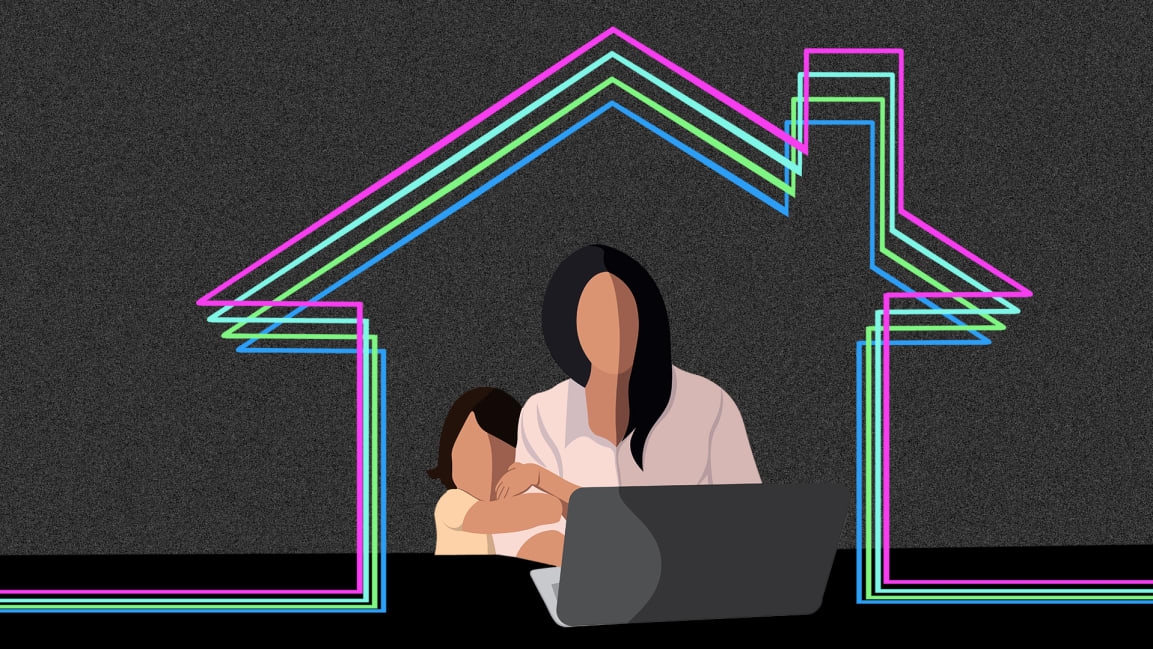Remote work is the cruel new ally in the War on Working Moms
By Sheela Subramanian
While there are constructive conversations happening on the policy level, including the Marshall Plan for Moms, there is not enough discussion about the root of the problem: our model for work. It’s our system for knowledge work—cobbled together over centuries—that forces us to listen to a meeting in one ear and our kid’s school in another at the exact same time, not flinch when we see that 91% of working mothers report being passed up for promotion during the pandemic, and expect to experience the motherhood penalty when we bring our “whole selves to work.”
Our society will forever find ways to shift the burden to women to figure out how to make it all work in the confines of our existing system, from leaning in to amplifying one another. Most recently, a Wall Street Journal article provided tips for how women can “ditch the guilt” when juggling careers and family. The article describes how women can do everything from adopting a more unapologetic mindset to using more absorbent hair towels to avoid the guilt. (Who has time to dry their hair these days? I don’t!)
And yet the tone is very much in line with the reality of the system we are forced to endure. The pandemic may be shining a spotlight on the symptoms, but the disease has festered as the U.S. has failed to sign on to a social contract that declares unquestioning support for working mothers. In a recent study, the U.S. ranks lowest among working mothers surveyed when it comes to feelings of productivity, work-life balance, and work-arrangement satisfaction in this new remote-work world.
Instead of trying to “ditch the guilt,” what if we reassigned the responsibility to employers? How might we focus attention on environments that help working mothers thrive, rather than the “useful tips” from those who have made it work? Because let’s face it: It’s not the guilt that’s holding working mothers back. It’s the systems and the incentives in place for our careers that foster this guilt.
So where do leaders start? While the pandemic has created a swirl of challenges for employees, it’s also opened opportunities for leaders to design a more inclusive post-pandemic workplace:
Abandon the flexibility stigma
Our society is wedded to an industrial work complex of predetermined work hours. The flexibility stigma means that “professionals are expected to arrange their lives to ensure unlimited availability to work unencumbered by family responsibilities.” But doing more at home doesn’t mean that you’re doing less at work. Research study after research study shows that working mothers are more productive, effective leaders, and contribute to business outcomes.
Of course, the 9-to-5 norm overlaps directly with school drop-off, virtual school management, and scrambling for pickups. Before the pandemic, mornings in my house were a race out the door to drop off the kids, with minute-by-minute schedules and breakfast on the go. Dinners weren’t any better: They were a rush just to get edible food on the table before crankiness ensued. It wasn’t the guilt that was burning me out. It was the act of showing my commitment to the archaic norms of the 9 to 5.
Our research shows that that flexibility actually fosters a better employee experience. Workers who have the option to work a flexible schedule report 53% higher productivity and 57% better work-life balance.
Leaders have the power to dismantle the old 9-to-5 system and replace it with an environment that encourages hybrid and asynchronous work. The existing model for work is rooted in anachronistic norms that no longer apply to the modern reality of broadband and SaaS tools. And the data is clear about the benefits: It’s good for both your business and your talent.
Consider your perks and who they truly serve
When my younger daughter was eight months old, I needed to travel to London to attend an event that my team was running. The travel time to Europe from San Francisco and the length of the multiday event created a trip that was at least eight days long. The anxiety about leaving my daughter, coupled with the logistics of pumping and shipping milk internationally, created a situation ripe with guilt. It was my responsibility as a leader to support my team, but it was my responsibility as a mother to make sure my kid was well nourished.
Carolyn Everson of Facebook used to take her kids on business trips longer than three days, so I asked our HR team if they could pay for a caregiver plane ticket—to bring my daughter and a caregiver along—as a way to make it work. They agreed, and the guilt of being away or pumping during all of my free moments was no longer a factor. I could enjoy time with my team and celebrate a successful event and be there with my daughter during a formative period of her development.
Companies are often evaluated by their perks, especially in an age of fitness reimbursements and free food. Perks have also come to reflect on the values that an organization embodies, from inclusivity to fun. In an article about perks, Wharton School professor Iwan Barankay writes, “The top one percent of a company generates 15-20% of value-added, so anything [employers] can do to attract and retain these people is fair game.” Think about who your perks are intended to retain. And then think again about how many working mothers are on that list. While the virtual wine tastings or terrarium-making classes may appeal to some, they are episodic in nature. And the video games or happy hours may get rave reviews, but they’re not helping those who need it most. Take a page from Nike and DaVita and reallocate funds to support working mothers with complimentary cleaning services, meal kits, or even credits for virtual tutors. These investments will signal how much you value the parents within your ranks, and they will lessen the burden in ways that matter.
Look around
As Ellen McGirt recently stated, the job of an inclusive leader is to look around the table and notice who’s not there. Then go ask yourself why, and fix it. It’s no secret that diverse teams create friction and make things harder. But if you look around your table—or your cadre of trusted people—and you’re not seeing a working mother, it’s time to fix that.
If you call people together after hours for virtual drinks or to get brunch on the weekends, you are excluding working mothers who are juggling multiple responsibilities.
And in asking yourself “why,” ask yourself “when” you are bringing your people together. If you call people together after hours for virtual drinks or to get brunch on the weekends, you are excluding working mothers who are juggling multiple responsibilities. And if they do oblige, these types of conversations—the time away to “quickly chat” during dinnertime or “brainstorm for Monday’s meeting” on a Saturday afternoon—may seem casual to you but are guilt-ridden for them.
Burnout can be described as seeing the same result repeatedly with no agency to fix it. Time after time, working mothers are working all hours to show up prepared and committed but miss out on that round of drinks or, more importantly, that critical conversation. If the caregivers on your team are doing everything to show their commitment to their work, yet do not have a seat at the table, they will burn out simply because they are excluded. Leaders have the power to change that dynamic.
A final note
In her memoir, Becoming, Michelle Obama talks about “raising adults, not children.” That’s what parenting is all about: It’s not just about “strategic breaks [that] prove worthwhile.” It’s not about spending time with your family to make yourself feel better. The responsibility of a parent is to raise adults who are kind, generous, hardworking citizens. Kids want to know that their parents have their backs and can be trustworthy and reliable, and they in turn can model that behavior when they are adults. By creating environments where employees can be trustworthy and reliable—both to their managers and to their families—leaders may be able to alter the course of the “she-cession” that is reversing the progress of the past few decades. It’s time we stop putting the burden on moms to play the game and instead use this as an opportunity to change the nature of the game itself.
Sheela Subramanian is a senior director of Slack’s Future Forum, where she leads go-to-market, content, and programming initiatives.
(39)



